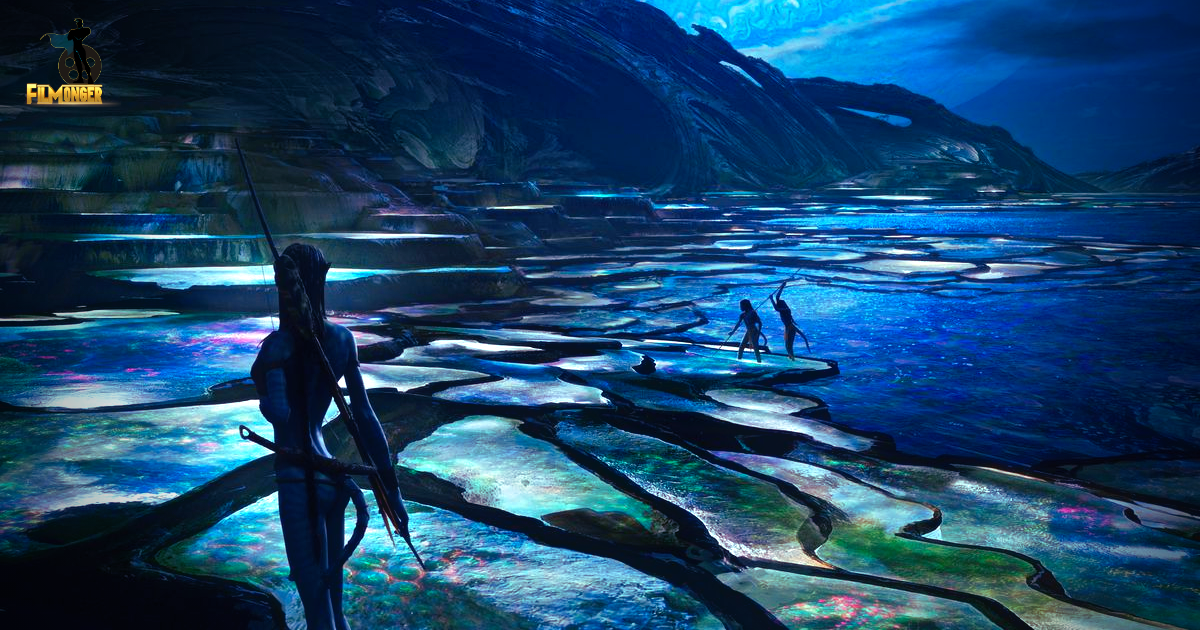James Cameron sought inspiration in Earth’s most stunning locations, using them as a canvas for the breathtaking alien world, Pandora in Avatar.
James Cameron’s Avatar is a cinematic marvel, transporting audiences to the enchanting alien planet of Pandora. While the movie dazzles with its groundbreaking special effects, it’s important to acknowledge the real-world locations that served as the creative wellspring for this otherworldly adventure. The natural beauty of Pandora is an integral component of the film’s allure. It not only provides a captivating backdrop for the story but also plays a pivotal role in Jake Sully’s transformation and determination to protect the planet. Recognizing the connection between Pandora and Earth’s stunning landscapes is crucial for the movie’s immersive experience.
Avatar was a long-cherished dream of James Cameron, conceived in 1995 but awaiting technological advancements to bring it to life. Pandora’s lore is expansive, with future sequels like Avatar 3 set to explore it further. Nevertheless, the heart of Pandora’s appeal lies in its familiarity. Instead of inventing an entirely alien world with an unfamiliar ecosystem, Cameron’s team drew inspiration from some of the most awe-inspiring locations on our planet.
1. Luminous Lagoon, Jamaica
The Source of Pandora's Bioluminescence
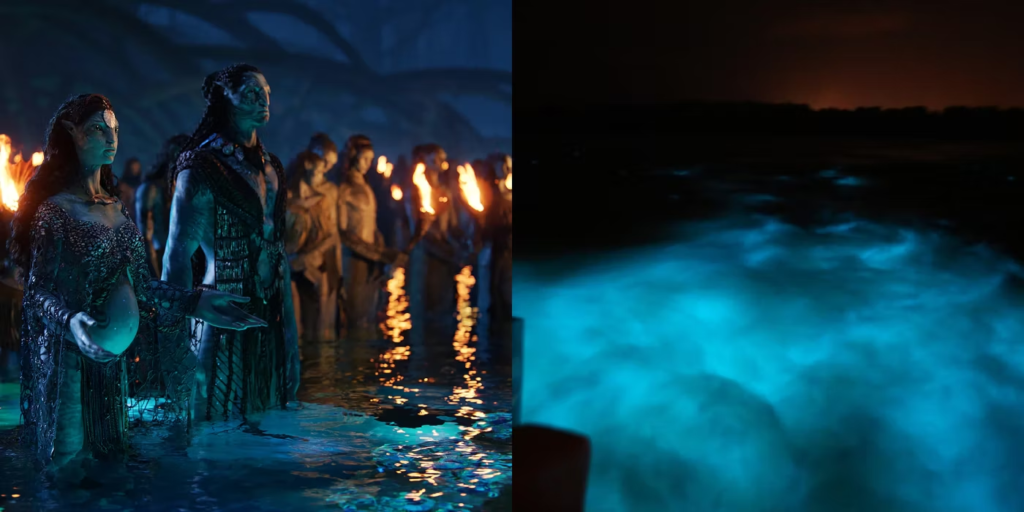
Bioluminescence, a stunning feature of Pandora’s underwater scenes, was brought to life on screen with inspiration from Jamaica’s Luminous Lagoon. In Avatar: The Way of Water, the radiant glow of algae creates an otherworldly ambiance beneath the waves. Yet, this phenomenon has its roots on Earth. The Luminous Lagoon in Jamaica, with its unique blend of two bodies of water, provides the perfect conditions for bioluminescent microorganisms. These tiny creatures emit a soothing blue glow when disturbed. Among the few places on Earth where this magical phenomenon occurs, the Luminous Lagoon stands out as the most renowned, offering a year-round spectacle.
2. Zhangjiajie National Forest Park, China
The Floating Hallelujah Mountains
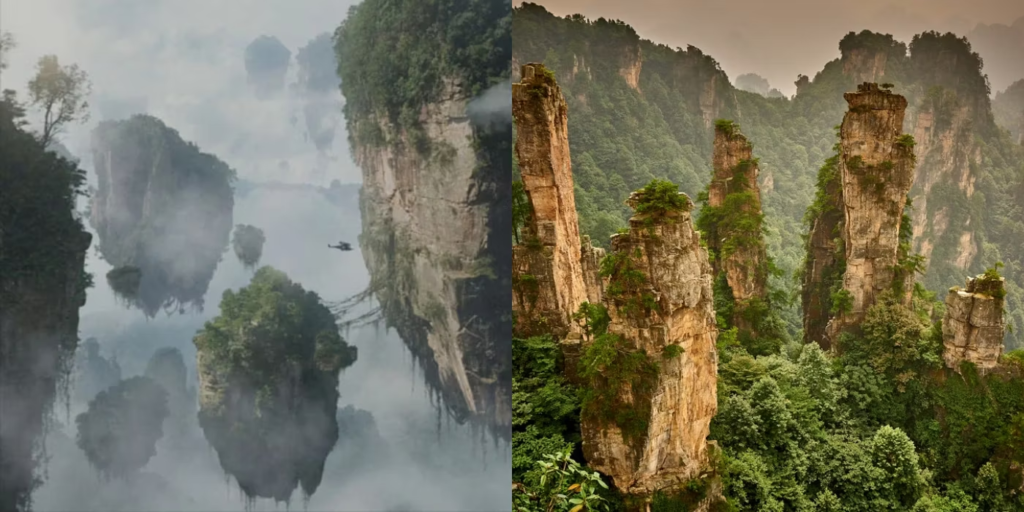
One of the pivotal moments in Jake Sully’s journey in Avatar occurs when he encounters the awe-inspiring floating Hallelujah Mountains. These gravity-defying peaks, obscured by mist and clouds, served as the visual inspiration for this breathtaking spectacle. Located in China’s Zhangjiajie National Forest Park, these towering pillars appear to float in mid-air, their bases hidden by the natural mist. The Avatar production team confirmed the influence of these mountains, and in 2010, one of the 3,500-foot pillars was even renamed Avatar Hallelujah Mountain in tribute to the film’s blockbuster status.
3. Waitomo Glowworm Cave, New Zealand
Illuminating Pandora's Land
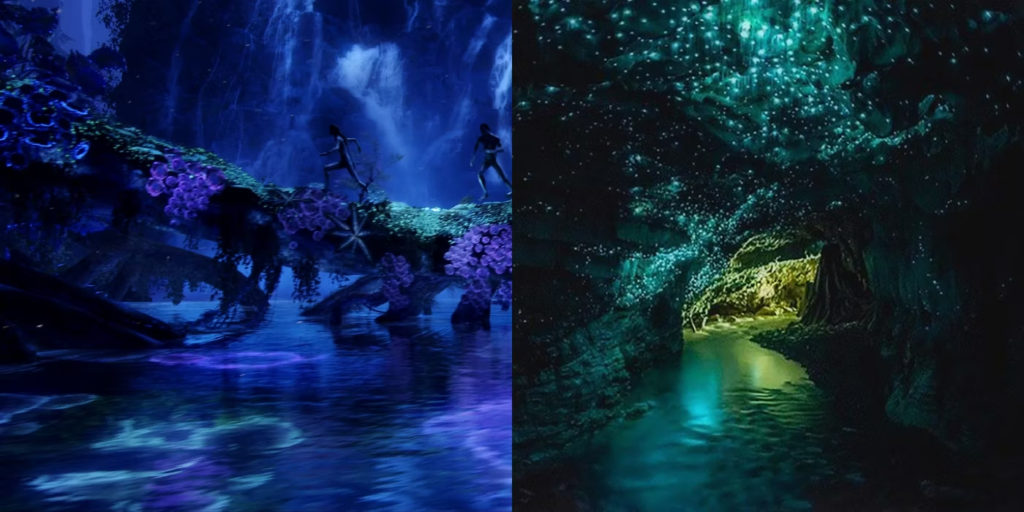
While bioluminescence in Avatar is prominently featured underwater, it first captivates audiences on land. The glowing flora of Pandora’s landscape, responsible for Jake’s early encounters with the planet’s wonders, finds its counterpart in the Waitomo Glowworm Caves of New Zealand. These caves are renowned for their unique glowworms, found only in New Zealand, which create a spectacular luminescent display. Given that much of Avatar was filmed in New Zealand, it’s likely that the production team drew inspiration from these natural wonders.
4. Mount Roraima, Venezuela
The Flat-Top Floating Plateaus
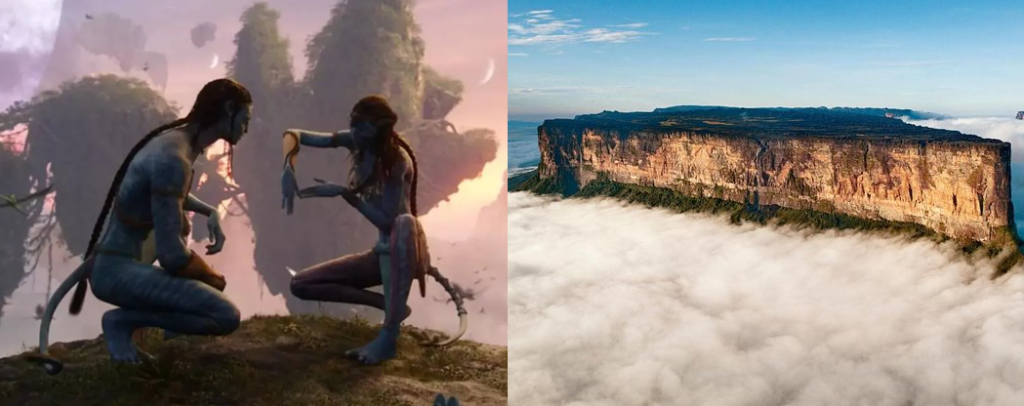
The iconic floating mountains of Pandora were also influenced by real-world wonders like Mount Roraima in Venezuela. This flat-top mountain is known as a Tepui, characterized by its flat plateau top that stretches for miles, often adorned with lush greenery. The extreme elevation of Mount Roraima frequently places its plateau above the clouds, creating an illusion akin to Pandora’s Hallelujah Mountains. This distinctive geological formation has not only inspired Avatar but also found its way into other works of fiction, including Pixar’s Up and Arthur Conan Doyle’s novel The Lost World.
5. Angel Falls, Venezuela
The Awe-Inspiring Waterfall
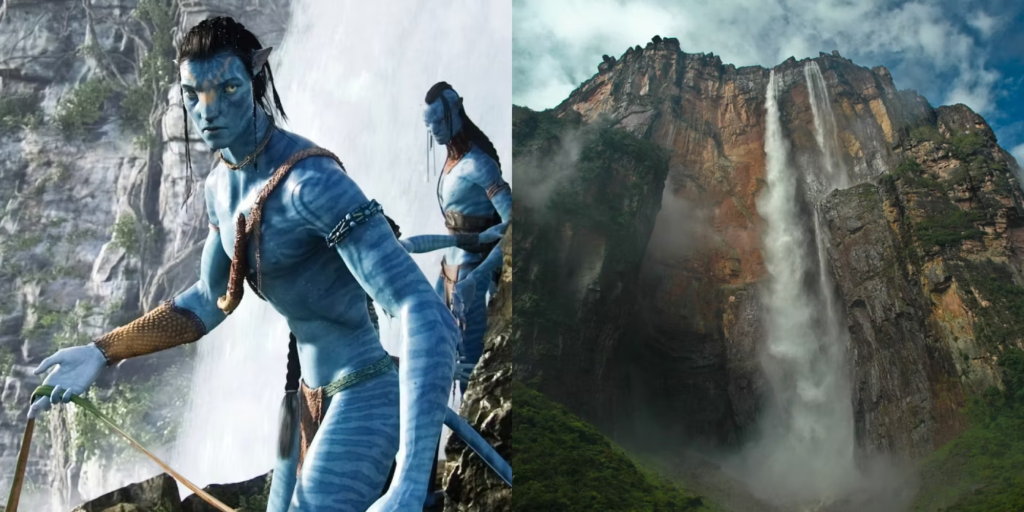
Pandora’s grandeur is undoubtedly awe-inspiring, and its vast natural landscapes served as the canvas for James Cameron’s creative vision. One real-world location that played a significant role in shaping the film’s atmosphere is Venezuela’s Angel Falls, renowned as the world’s tallest uninterrupted waterfall. In Avatar, before Jake captures the formidable flying Toruk beast, he must first learn to master an ordinary Ikran. This exhilarating sequence unfolds in an environment reminiscent of Angel Falls, with the colossal waterfall providing a stunning backdrop. The seemingly endless descent of water subtly amplifies the dizzying height of the environment, intensifying the tension of Jake’s maiden flight.
6. Wisteria Tree At The Ashikaga Flower Park, Japan
The Tree of Souls
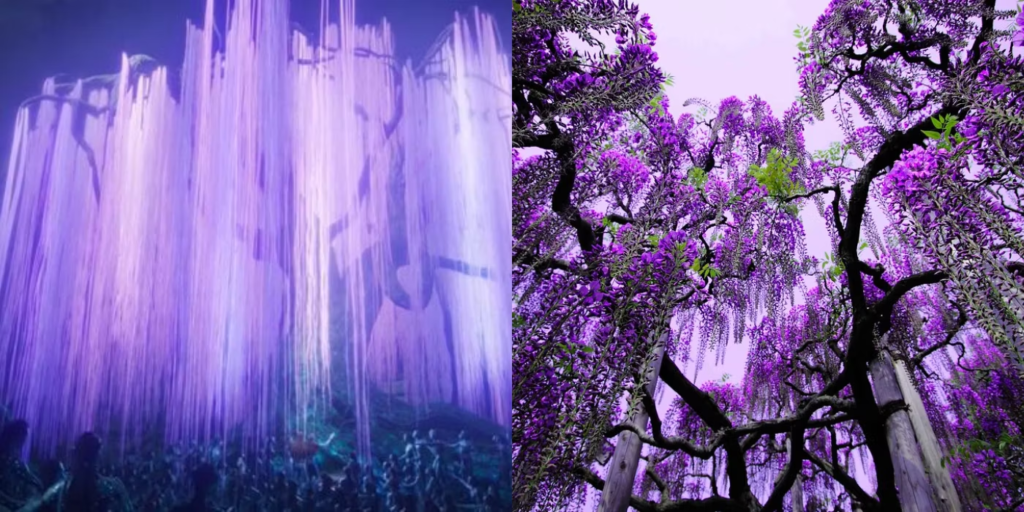
Avatar’s most sacred Na’vi location, the Tree of Souls, owes its aesthetic inspiration to Japan’s majestic wisteria trees. Adorned with long, gracefully draping tendrils that burst into vibrant hues of white, pink, and purple, these wisteria trees closely mirror the enchanting appearance of Pandora’s Tree of Souls. The Great Wisteria Tree at Japan’s Ashikaga Flower Park, dating back to 1870, stands as Japan’s largest wisteria. Its expansive canopy and cascading purple flowers evoke a striking resemblance to the Tree of Souls, illustrating the influence of real-world beauty on Pandora’s allure.
7. Waipoua Forest, New Zealand
Home of the Omaticaya Clan
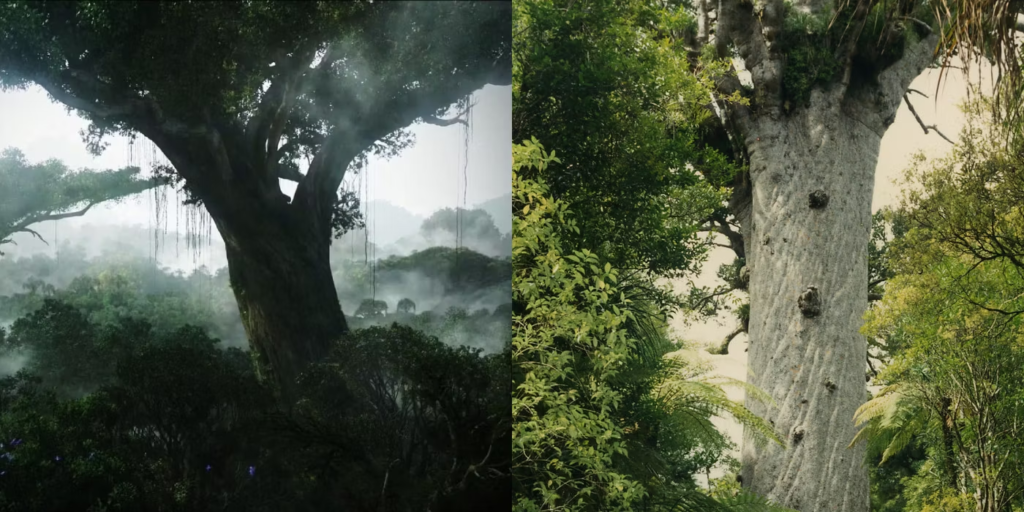
Pandora’s lush forests, teeming with life and ancient wisdom, draw inspiration from forests worldwide. However, the spotlight shines on the home tree of the Omaticaya clan, a pivotal element in the Avatar story. This thousand-year-old tree serves as the generational home for the tribe, and its majestic presence was influenced by New Zealand’s Waipoua Forest. Located on the North Island of New Zealand, this forest is steeped in cultural significance for the indigenous Māori people. Notably, it is home to the largest kauri tree in New Zealand, known as Tāne Mahuta or God of The Forest, adding a layer of authenticity to the movie’s portrayal of Pandora’s lush ecosystems.
8. Kauai Rainforest, Hawaii, USA
The Sensory Odyssey

The dense, vibrant greenery and diverse ecosystems of the Kauai rainforest in Hawaii served as a direct inspiration for Pandora’s own lush rainforest. James Cameron’s commitment to authenticity led him to take several Avatar actors to this Hawaiian paradise for a unique “sense-memory odyssey.” During their stay, the actors immersed themselves in the rainforest, cooking meals in underground fire pits and quenching their thirst with water collected from leaves. Cameron’s intention was clear: to provide the actors with sensory details that would enable them to evoke the memories of a real rainforest when performing on Avatar’s blue-screen soundstage.
